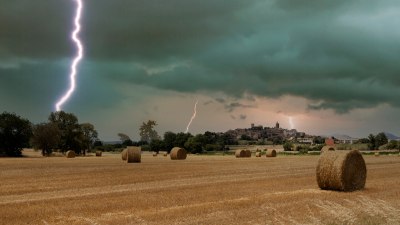How Stormy Weather Impacts Emotional Connection
Explore the connection between stormy weather and emotional bonds, uncovering psychological effects and tips for strengthening relationships.

Weather has an undeniable influence on our day-to-day lives, but its impact is particularly noteworthy when it comes to our emotional connections with others. Stormy weather, with its gloomy skies, heavy rainfall, and roaring winds, can significantly affect our mood and, consequently, our relationships. The correlation between mood and relationships is well-established, but how exactly does stormy weather come into play? In this article, we will delve deep into the nuances of how stormy weather impacts emotional connections, shaped by psychological insights and practical examples.
The Science of Weather and Mood
Scientific studies have shown that weather affects human emotions. During overcast or rainy days, many people experience low energy levels and decreased motivation. This shift in mood can create feelings of sadness or irritability, which, in turn, may alter the dynamics of interpersonal relationships. Seasonal Affective Disorder (SAD), a form of depression that occurs at certain times of the year, is often triggered by prolonged periods without sunlight. Understanding this psychological connection can help us navigate turbulent emotional waters during stormy weather.
The Power of Atmospheric Conditions
Storms are often accompanied by dramatic changes in atmospheric pressure and humidity, all of which can affect how we feel both physically and mentally. Low atmospheric pressure can sometimes lead to feelings of discomfort, while high humidity can lead to irritability. When emotions are already heightened due to external conditions, interactions with loved ones may become strained. This can lead to miscommunication, arguing, or withdrawal, which ultimately can hinder emotional connections.
The Role of Shared Experience
While stormy weather can hinder emotional connections, it can also serve as a strengthening force in relationships, depending on how people choose to respond. When faced with a storm, couples or families may huddle together for warmth and safety. Shared experiences during bad weather can foster a sense of teamwork and solidarity, especially if the group faces challenges together, such as power outages or flooding. These shared experiences can create lasting memories that enrich relationships and deepen emotional bonds.
Adapting Communication Styles
One of the significant impacts of stormy weather on interpersonal dynamics is how individuals communicate. Feeling emotionally charged can change the way people express themselves, leading to heightened emotions and misunderstandings. To counteract this, it is essential to adapt communication styles during stormy weather. Taking a step back, practicing active listening, and ensuring a calm delivery of thoughts can facilitate healthier conversations, even in tense situations. Partners can also employ humor or light-hearted conversation starters to diffuse any brewing tension.
Creating Rituals for Stormy Days
Establishing special rituals for stormy days can enable couples and families to create positive associations with inclement weather. This could be enjoying a movie marathon, cooking together, or lighting candles for a cozy atmosphere. Rituals can help shift focus from the negative aspects of the weather to nurturing time spent together. Building these traditions can become a reliable source of comfort and emotional stability, turning gloomy days into opportunities for connection.
The Effects of Isolation
Stormy weather often leads individuals to stay indoors, leading to physical isolation. While it's safe to remain indoors during storms, prolonged isolation can be detrimental to emotional health and connection. It's important to find ways to remain socially active even while sheltered from the elements. Utilizing technology for virtual meet-ups, video calls, or even gaming can help mitigate feelings of loneliness. Maintaining these social connections can help prevent depressive feelings often exacerbated by bad weather.
Emotional Resilience in Tough Times
Another important aspect to consider when discussing stormy weather and emotional connection is the role emotional resilience plays. Developing resilience allows individuals to manage their emotional responses and adapt to challenging situations better. This resilience can benefit interpersonal relationships, as it facilitates understanding and patience. Engaging in activities that promote mental well-being, like mindfulness practices, physical exercise, or hobbies, can help individuals become more grounded and emotionally available to their loved ones during stormy times.
Incorporating Nature into Solutions
The psychological benefits of nature are well-documented, and even while it's stormy outside, incorporating nature into daily routines can help improve mood and emotional connections. This can be achieved through indoor plants, natural light from windows, or even bringing the outside in using nature documentaries or scents of rain through essential oils. These elements can create a calming atmosphere, fostering emotional closeness during stormy days when you might otherwise feel stressed or irritable.
Navigating Emotional Connections through Stormy Weather
In conclusion, stormy weather influences our emotional state, impacting how we connect with our loved ones. Understanding this dynamic can empower individuals to take proactive steps in preserving their relationships during tumultuous times. Open communication, shared experiences, and incorporating rituals can reconceptualize a stormy day into something more enriching. As we navigate life's storms, it is vital to remember the importance of emotional connections and prioritize the well-being of ourselves and those we love.











